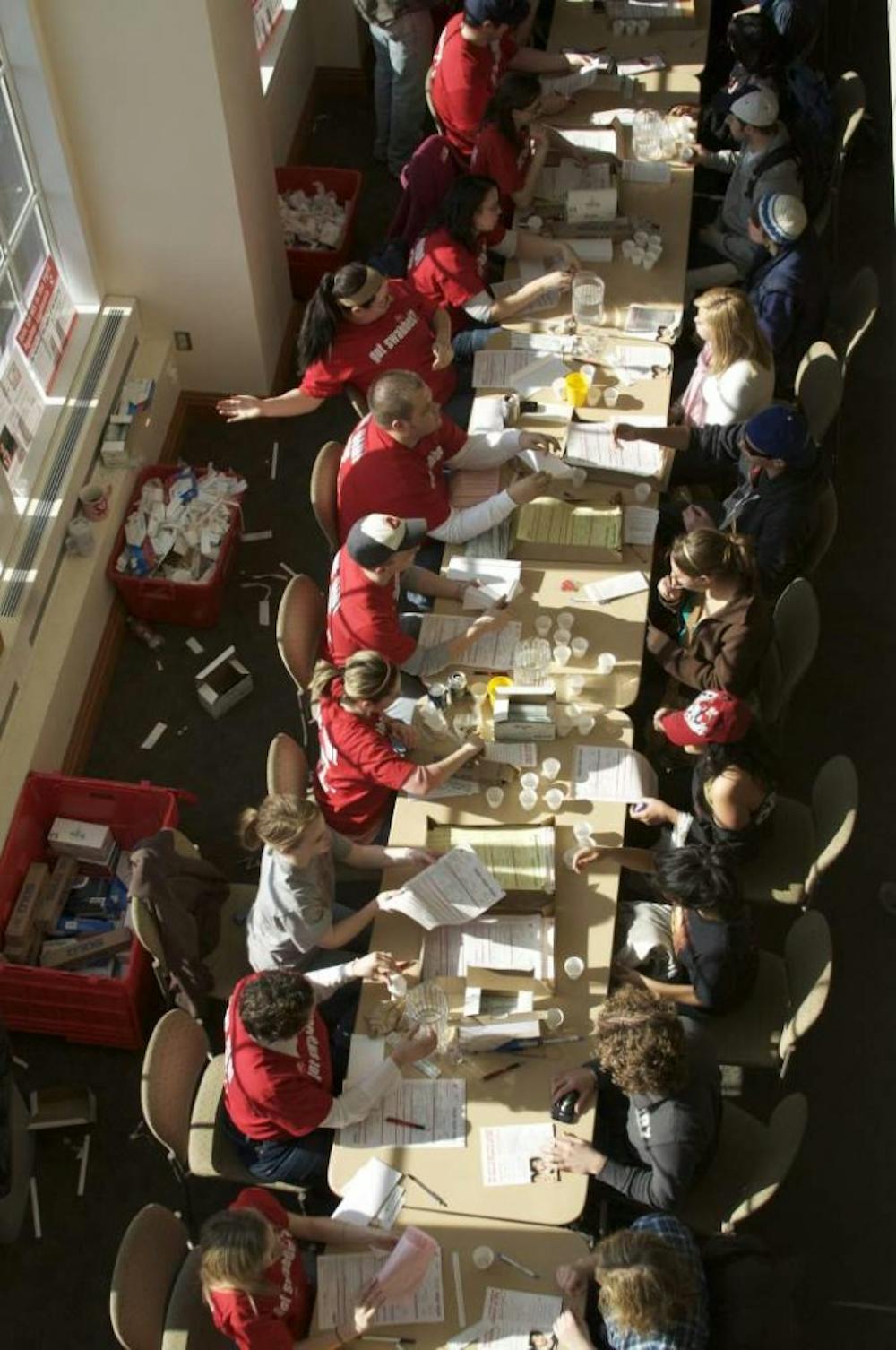Elon University senior James Davies may have just accomplished the top goal on his bucket list: to save someone’s life.
But it didn’t happen quite the way he expected. He didn’t dramatically rescue someone from a burning building, nor did he save someone from drowning. Instead, Davies made a blood stem cell donation to a leukemia patient in need in early September.
The process for the donation all started when Davies attended an on-campus bone marrow donor drive set up by Elon’s National Pan-Hellenic Council his sophomore year.
“A friend of mine told me to come sign up with her at a bone marrow registry for the Delete Blood Cancer DKMS center,” Davies said. “I had no idea what any of that meant. My friend said the odds of me getting picked [to donate] were less than the odds of me winning the lottery, so I was like, ‘OK, I’ll feel like a good person and sign up. I’ll probably never get called anyway.’”
But Davies’ chance of being selected was higher than he thought. He received an important call from a representative at DKMS about a year after he signed up.
“I was actually driving to my girlfriend’s house when I got a call from a guy saying, ‘You’re a match with one of our patients and we’d love for you to donate,’” he said.
Davies agreed and began moving forward with the donor procedure. He was soon told he would be doing a peripheral blood stem cell (PBSC) donation, an outpatient procedure that serves as the more common and less painful method of the two ways bone marrow can be donated. The other method is a surgical donation where bone marrow is removed from the back of both hipbones.
“My procedure was way less intense,” Davies said.
But Davies had to go through several crucial steps before undergoing the procedure itself. First, he had to get a physical to make sure his heart, liver, spleen and lungs were all healthy enough to handle the procedure.
Second, he had to be injected with filgrastim — a synthetic protein used to boost stem cell and platelet count — on the four consecutive days leading up to the donation.
When the time finally came, Davies traveled to Washington, D.C., for the procedure.
Blood was taken through one arm and then passed through a machine that separated out the blood stem cells to be provided to the patient in need. The remaining blood was returned to Davies’ body through the other arm. The procedure took about four to five hours total.
“The nurse was saying they filtered all the blood in my body somewhere between two to four times, but honestly, I didn’t even feel anything,” Davies said. “I wasn’t even sore the next day — just a little tired. [Two days later] I felt 100 percent fine.”
Every day thousands of patients search for a bone marrow donor match, but only four out of 10 patients will receive a transplant because of the current lack in matching donors, according to Rebecca Dow, workup coordinator for Delete Blood Cancer DKMS. She said DKMS works to spread greater awareness about the need for more registered donors — the more people they reach, the more patients can potentially be saved, she said.
[quote] I don’t know [the patient's] name or anything about this guy, but if I can give him a second chance at life... I think that’s a pretty remarkable thing" — senior James Davies, blood stem cell donor [/quote]
“The mission of Delete Blood Cancer DKMS is to eradicate blood cancer and register more people to become a potential lifesaver,” Dow said. “James is an example of a modern-day hero for selflessly giving a second chance at life for someone in need.”
But what makes Davies’ situation even more unique is, because of DKMS’s patient confidentiality rule, he barely knows anything about the person to whom he donated. The patient can choose to reach out to Davies a year after the procedure takes place, though, and Davies said he hopes that will happen.
“All I know is that he’s a 55-year-old male with leukemia who lives in the United States,” he said. “I don’t know his name or anything about this guy, but if I can give him a second chance at life — maybe a chance for him to walk his daughter down the aisle or see his grandchildren — I think that’s a pretty remarkable thing, and it would be a crazy rewarding experience to meet him someday.”
In the meantime, Davies said he’s determined to set up more bone marrow donor drives at Elon, whether it’s on his own or through the Student Union Board, of which he is president. A college student is 75 percent more likely to sign up to donate than the average person, according to Dow, so Davies said he hopes to take advantage of this statistic at Elon.
“It would be really good for Elon students to do this,” he said. “We always talk about building the local community, but you have to contribute to the global community as well. I will personally try to do something more for this cause in any way I can.”


